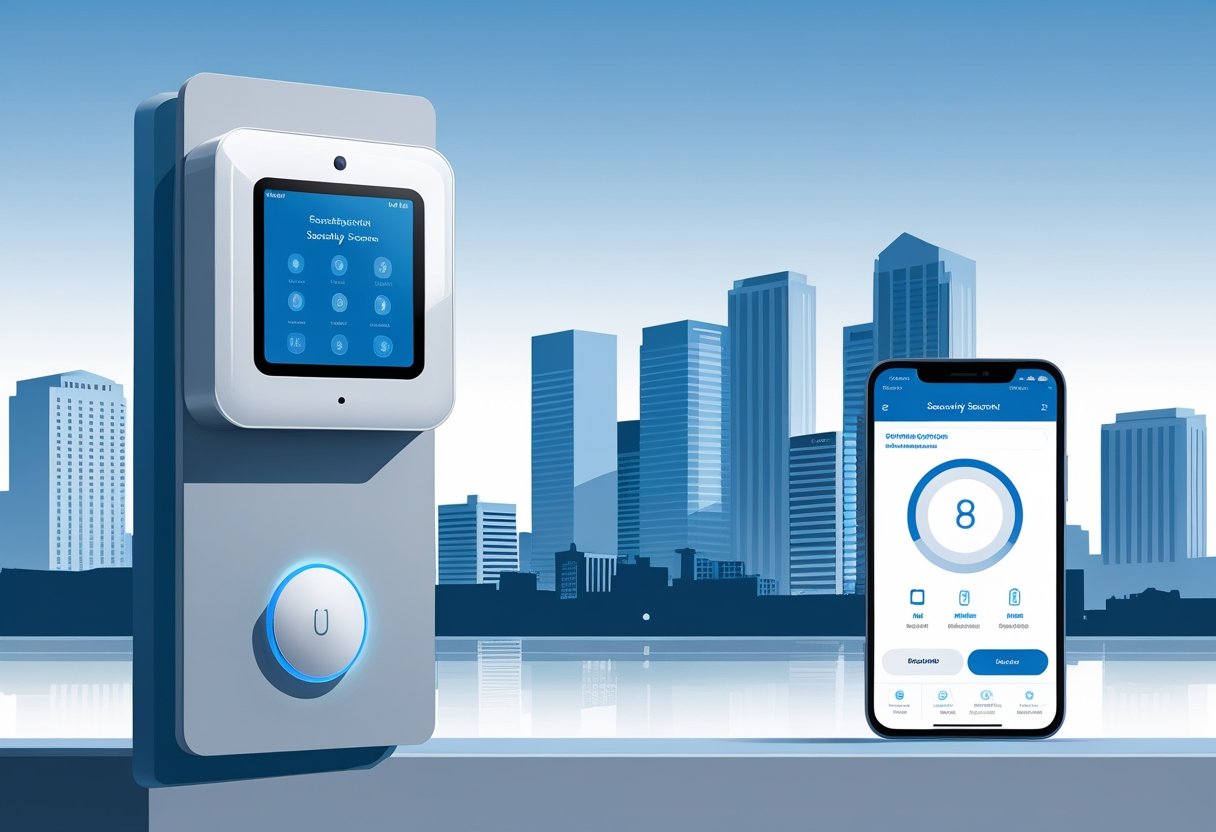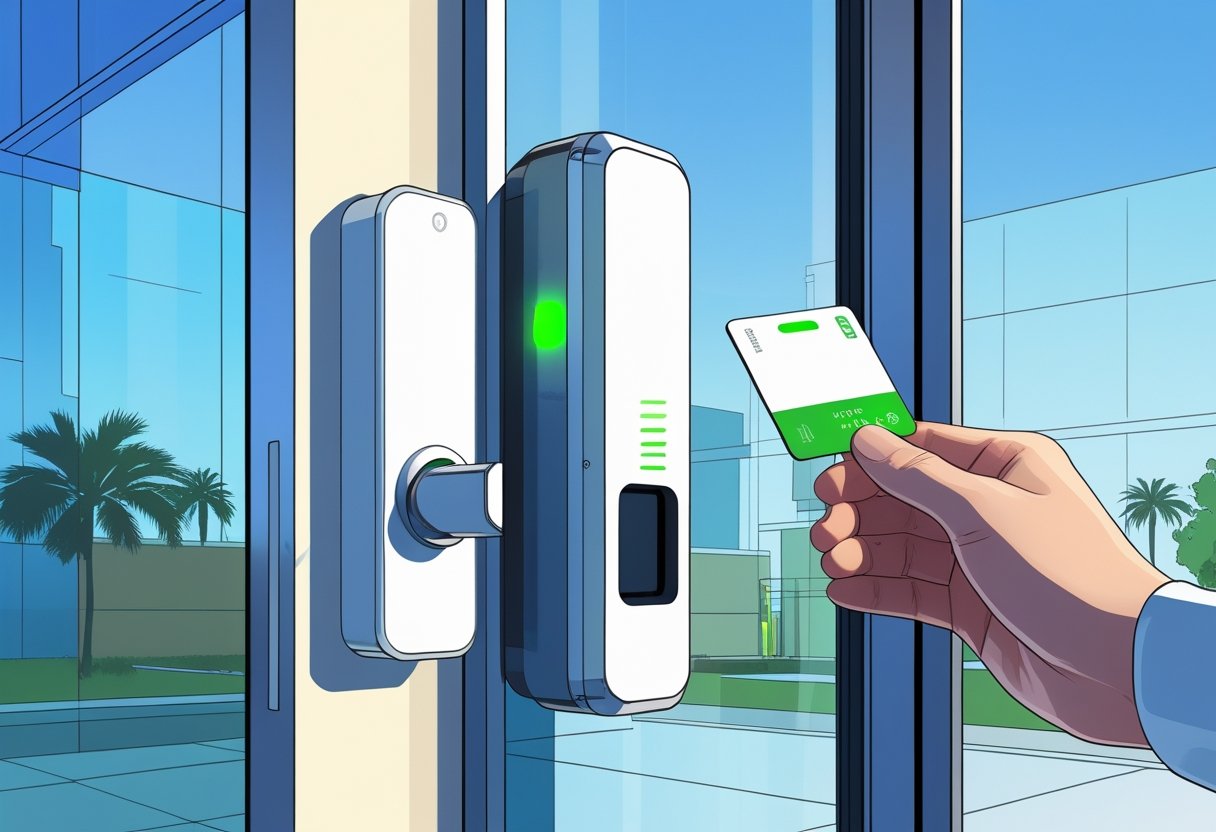How Businesses Can Take Advantage of Video Surveillance Solutions: Enhancing Security and Operations
In an age where data is a critical asset for customer service and strategic decision-making, video surveillance systems offer more than just security. As a business owner, leveraging video surveillance can play a pivotal role in enhancing operational efficiency and providing valuable insights. High-quality surveillance systems allow you to monitor your premises in real-time, ensuring safety and immediate response to any incidents.

The utility of video surveillance extends beyond security. Advanced systems equipped with cloud-based AI solutions can boost your business by reducing costs and streamlining operations. The added intelligence helps small businesses in particular by automating surveillance tasks, which saves both time and labor costs. Moreover, with detailed video coverage, you can analyze customer behaviors, optimize store layouts, and improve product placements, all of which can potentially enhance the customer's experience and increase sales.
Investing in the right video surveillance for your business is a proactive measure that can yield multifaceted benefits. It not only deters theft and vandalism but also strengthens accountability, guides training, and supports compliance with safety regulations. Through careful selection and integration of surveillance technology, you strengthen your business's foundation for success in today's competitive landscape.
Understanding Video Surveillance Systems

Video surveillance systems are central to enhancing security and operational efficiency. Your grasp of its technologies and components can transform how you protect and manage your business.
Types of Video Surveillance Technologies
Analog Cameras: Traditional surveillance systems, primarily for basic video recording. They send footage over coaxial cables to a digital video recorder (DVR).
IP Cameras: These offer higher resolution than analog cameras, sending footage over a network and storing it on network video recorders (NVRs) or in the cloud.
HD Over Coax: High-Definition video over existing coaxial cables. They provide clearer images without the need to switch over to IP systems.
Thermal Imaging Cameras: Detect heat signatures, useful in low visibility conditions. They don't require lighting to capture clear images.
Motion Detection Cameras: Trigger recording or alerts when motion is detected, optimizing storage and focusing attention on potential security events.
PTZ Cameras: Pan-Tilt-Zoom cameras allow for remote directional and zoom control, providing comprehensive coverage of large areas.
Components of a Comprehensive Video Surveillance Solution
Cameras: The eyes of the system. They can range from simple fixed units to sophisticated PTZ or thermal imaging cameras.
Storage: Where your video data is kept. It can be DVRs, NVRs, or cloud storage, depending on your camera technology.
Monitors/Displays: For live viewing or playback of video footage. Monitors are necessary for security personnel to analyze real-time events.
Cabling and Connectors: Essential for power and data transmission in analog systems. IP systems often require a network infrastructure.
Video Management Software (VMS): The brain behind the operation, enabling features like live viewing, playback, and intelligent analytics.
By understanding these technologies and components, you can tailor a video surveillance solution that meets your business's specific needs.
Benefits of Video Surveillance for Businesses

Incorporating video surveillance can significantly bolster the security of your establishment and enhance operational efficiency. Here's how this technology can serve your business's needs.
Enhancing Security and Safety
Deterrence of Theft and Vandalism: Utilizing business security cameras can greatly reduce occurrences such as shoplifting and employee theft. A visible surveillance setup can deter potential thieves by increasing the risk of getting caught.
Creating a Safer Environment: High-definition digital surveillance systems not only provide clearer images but also ensure a safer environment by offering wider viewing angles and better coverage of your business premises, which contributes to the overall safety of your customers and staff.
Improving Business Operations and Productivity
Monitoring Efficiency: Video surveillance isn't just for security. It's a tool that can help you understand your business better. By observing daily operations, you can identify areas that need improvement and make decisions based on actual footage, ultimately reducing the risk and impact of incidents.
Supporting Employee Training: Utilizing video footage, you can help train your employees more effectively by showing examples of correct procedures. This can lead to improved employee performance and, therefore, a more productive business operation.
Strategic Implementation of Video Surveillance
Implementing video surveillance strategically can maximize your security while enhancing business operations. This involves careful assessment of needs, placement of cameras for optimal coverage, and integration with existing security systems.
Assessing Business Security Needs
You must first identify your critical security risks and vulnerabilities. Look at past incidents, assess potential threats, and determine sensitive areas that require monitoring. An article on BizTech Magazine emphasizes the importance of understanding your security needs to enhance not just safety but also operations and customer experience.
Determining Optimal Camera Placement
Camera placement is crucial for effective surveillance. Ideal locations for cameras include entry and exit points, high-traffic areas, and locations with valuable assets. Ensure that cameras have clear views, are inaccessible for tampering, and cover each other's blind spots.
- Entry/Exit Points: Cover all angles to monitor anyone coming in or going out.
- High-Traffic Areas: Place cameras in lobbies, hallways, or aisles to observe flows of people.
- Sensitive Zones: Protect assets and data by focusing on areas with restricted access.
Information on deployment considerations from a BizTech Magazine article reiterates the importance of strategic camera placement for maximum protection.
Integration with Other Security Systems
To amplify the benefits of your video surveillance, integrate cameras with your existing security infrastructure such as alarms, access control, and motion detectors. Ensure your video feeds are streamlined into a centralized management system that allows for real-time alerts and quick response. Collaboration between systems bolsters security and streamlines incident management. Integration best practices can be informed by insights from tech outlets like BizTech Magazine.
Data Management and Storage Solutions
Effective data management and storage are vital for harnessing the power of video surveillance. Your choice of storage solutions can significantly impact the performance and reliability of your surveillance system.
Cloud Storage vs. On-Premise Storage
Cloud Storage offers scalability and remote accessibility. You can increase your storage capacity as needed and access your video data from anywhere. This flexibility is particularly useful if your business experiences variable growth or has multiple locations. For example, the NetApp Video Surveillance Storage (VSS) solutions highlight the ability to manage extensive video data efficiently.
Advantages:
- Scalable storage space
- Remote data access
- Reduced physical infrastructure
On-Premise Storage, on the other hand, ensures that your data resides within your physical control. This approach may be preferred for organizations with high-security requirements or those that operate in regulated industries. On-premise solutions can be costly due to the need for hardware maintenance and updates.
Advantages:
- Direct physical control over data
- Potentially faster data retrieval
- Suitability for sensitive data
Ensuring Data Security and Privacy
Security Measures: It is essential to protect your video surveillance data against unauthorized access and cyber threats. Implement robust encryption protocols for data at rest and in transit. Regularly update your security systems to defend against new vulnerabilities.
- Encryption: Protect data with strong encryption standards.
- Access Control: Limit data access to authorized personnel only.
Privacy Protections: Respect privacy laws and regulations by anonymizing collected data where appropriate and ensuring you have the necessary consent from individuals captured in video surveillance. Always be transparent about your data collection policies.
- Compliance: Adhere to GDPR, CCPA, and other data protection regulations.
- Transparency: Clearly communicate surveillance policies to stakeholders.
Leveraging Video Analytics
Video analytics technology transforms raw video footage into actionable insights to boost your business efficiency and security.
Behavior Recognition and Analysis
Leveraging sophisticated algorithms, video analytics enables you to identify and understand customer behaviors in real-time. By analyzing movement patterns, you can enhance store layouts to improve customer experience and increase sales. This technology also helps in detecting unusual activities, potentially preventing theft or other security incidents.
Heat Mapping and Traffic Flow
With heat mapping, you gain visual data on where customers spend the most time within your premises. This valuable insight helps you optimize product placement and staff allocation. Traffic flow analysis provides data on the busiest times and flows of movement, allowing for better staff scheduling and resource management to ensure that customer needs are effectively met.
Compliance and Legal Considerations
When implementing video surveillance in your business, adhering to relevant laws and best practices is crucial to protect both your company and the privacy rights of individuals.
Understanding Surveillance Laws
Federal and state laws: You need to be aware of both federal and state regulations that govern video surveillance. For instance, some areas require that you inform your employees about the presence of cameras and the scope of their coverage. The National Law Review discusses the need to capture only necessary footage to further your business interests.
Consent and notice: Many jurisdictions mandate clear signage that notifies both employees and customers of ongoing surveillance to avoid potential legal issues.
Best Practices for Compliance
- Clear Policy: Develop a detailed surveillance policy that outlines the operational parameters of your surveillance system. This ensures transparency with your team.
- Minimum Necessary Use: Limit your surveillance to what is essential. According to legal experts, it is important to avoid infringing on privacy by not exceeding the areas and times necessary for monitoring.
- Data Protection: Ensure appropriate measures are in place to protect the recorded data. Access should be restricted, and storage should comply with applicable data privacy laws.
- Regular Reviews: Regularly review your surveillance policies and practices to keep them up to date with the latest legal requirements.
Cost-Benefit Analysis of Video Surveillance
Investing in video surveillance technology requires an understanding of potential returns against the costs involved. Your focus should be on quantifiable benefits and long-term financial implications.
Evaluating Return on Investment
When assessing Return on Investment (ROI) for video surveillance, consider both tangible and intangible returns.
- Tangible ROI: directly measurable effects such as reduction in theft, which can improve your profitability. A study by IDC discusses how quality video surveillance can act as a deterrent for criminal activity, directly affecting your bottom line.
- Intangible ROI: includes improvements in employee productivity and customer trust. While harder to quantify, these factors contribute to a positive business reputation and can lead to increased sales and reduced employee turnover.
Calculating ROI involves measuring these effects against the cost of the surveillance system, its installation, and ongoing maintenance.
Long-Term Cost Savings
The long-term cost savings of video surveillance systems are equally significant.
- Reduction in Insurance Premiums: Many insurance providers offer lower premiums to businesses that invest in comprehensive video surveillance.
- Maintenance and Upgrades: Modern digital systems require less maintenance due to fewer mechanical parts and more durable components. Companies like Marco note that digital video surveillance systems provide superior video quality, which can extend the utility of the system and defer replacement costs.
- Data Integration: Enhanced integration capabilities allow for better use of surveillance footage, supporting business analytics that can lead to cost-effective operational adjustments.
Documenting and reviewing these cost savings alongside your ROI analysis ensures a well-rounded financial assessment of your video surveillance investment.
Future Trends in Video Surveillance
The landscape of video surveillance is rapidly changing, with advancements in technology that offer enhanced security and operational efficiency for your business.
Advancements in Artificial Intelligence
Artificial Intelligence (AI) is set to transform the video surveillance industry by introducing capabilities that simplify the monitoring process. AI-powered video analysis tools allow your systems to recognize patterns, detect anomalies, and even predict potential incidents, offering you a proactive approach to security. This means that instead of merely recording, your surveillance system can actively analyze video feeds in real-time, alerting you to unusual activities that may warrant further investigation. Companies are increasingly budgeting for AI in surveillance to maximize the benefits of this technology.
The Rise of Smart Surveillance Systems
Smart surveillance systems represent the convergence of various technological trends. These systems are characterized by the integration of IoT devices, resulting in enhanced capabilities such as remote access, real-time notifications, and data analytics for informed decision-making. The integration of smart features enables your video surveillance system to be more than a passive security measure; it becomes an active tool in the optimization of business operations. As part of this shift, businesses are looking at video surveillance solutions that can offer cost reduction through efficient and automated processes.
.svg)



.svg)


.svg)



